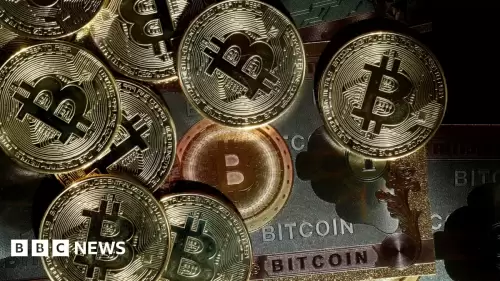 |
|
 |
|
 |
|
 |
|
 |
|
 |
|
 |
|
 |
|
 |
|
 |
|
 |
|
 |
|
 |
|
 |
|
 |
|

Pi Network, the cryptocurrency that can be mined on mobile phones and has over 40 million members globally, is getting closer to launching its full Open Mainnet. This transition would see the network operating in a completely open capacity, allowing for broader exchange listings and seamless integration with other systems.
The project, co-founded by two Stanford PhDs, Dr. Nicolas Kokkalis and Dr. Chengdiao Fan on March 14, 2019, set out to create a cryptocurrency mining method accessible to everyone through their smartphone, in contrast to the specialized hardware usually required for crypto mining.
After launching its Enclosed Mainnet in December 2021, Pi Network has been working towards shifting from a closed system to an openly connected one. The Enclosed Mainnet saw the blockchain operating in a walled-off environment, allowing the team to concentrate on adding more users to the network through Know Your Customer (KYC) checks, transferring the mined Pi coins to the mainnet, and aiding in the development of applications and tools within its own ecosystem.
With completed KYC, users, called Pioneers, could use Pi Network’s applications and interact with each other within this limited space. However, this mainnet wasn’t yet able to link up with other blockchain networks, users couldn’t use external wallets, and Pi Coin wasn’t available on public crypto exchanges.
While members of the community and some reports had speculated that this transition might occur around February 20, 2025, or early in 2025, the main Pi Network team had consistently stated that their focus was on reaching specific goals first. These goals included substantial progress in KYC sign-ups, shifting the coins to the Mainnet, and having a strong lineup of apps on the network.
As of early May 2025, the big Open Mainnet launch was still on the horizon, with the team emphasizing that they would go live when they’re ready, not by a set date.
To prepare for the network’s complete opening, the project has a to-do list:
* More users need to pass KYC. This process is crucial for opening up the network fully and tying it to broader financial systems.
* The project aims to develop a comprehensive ecosystem of apps. Some interesting projects are already in the works, such as a stablecoin, a decentralized autonomous organization (DAO), and an application for managing personal identity on the blockchain, collectively decided upon by the community.
* The project is focused on launching an "open-source environment" to encourage more developers to build on Pi Network.
Pi Network stands out with its method of mobile phone mining, designed to be light on battery and accessible to anyone. In contrast to Bitcoin’s energy-intensive mining, which is done on specialized hardware, Pi Network users “mine” the coin by tapping a button in the app each day. This is meant to demonstrate their ongoing engagement with the network and contributes to building the overall trustworthiness of the system.
The network uses a variant of the Stellar Consensus Protocol (SCP) and Federated Byzantine Agreement (FBA) for reaching agreement on transactions, which relies on “security circles”—small groups of users who vouch for each other—to confirm transactions. This is said to be an efficient and planet-friendly method, contrasting with Proof-of-Work (PoW) or the commonly known Proof-of-State (PoS) systems.
There’s a hard cap of 100 billion Pi coins in total. Of this:
* 80% goes to the Community (that’s 80 billion Pi)
* Mining Rewards (65 billion Pi): This is for coins users have mined and will mine. A good chunk of Pi was mined before the Mainnet really got going, but the actual amount that gets moved over will depend on users passing KYC.
* Community and Ecosystem (10 billion Pi): A future Pi Foundation will look after this pot, using it for grants, community get-togethers, and helping the ecosystem grow.
* Liquidity Pool Reserves (5 billion Pi): This stash is to make sure there’s enough Pi flowing smoothly for trading and use within the system.
* 20% is for the Core Team (20 billion Pi): This share for the team gets released gradually, based on how much mining the community accomplishes.
The rate at which users can mine Pi is set to decrease as more people join, meant to make Pi a bit rarer over time and reward those who started mining earlier. Transaction fees on the Pi Network are said to be burned (destroyed), which would naturally reduce the total coin supply.
A huge part of Pi Network’s plan is to create an ecosystem packed with useful apps and services. People use the Pi Browser to explore these DApps (decentralized applications) and other Web3 offerings. Some cool project and app types include:
* A decentralized
免责声明:info@kdj.com
所提供的信息并非交易建议。根据本文提供的信息进行的任何投资,kdj.com不承担任何责任。加密货币具有高波动性,强烈建议您深入研究后,谨慎投资!
如您认为本网站上使用的内容侵犯了您的版权,请立即联系我们(info@kdj.com),我们将及时删除。
-

- 比特币,美联储税率和加密货币:纽约人的拍摄
- 2025-08-05 13:23:49
- 导航加密货币嗡嗡声:比特币的弹性,税率降低了耳语以及加密货币的兴起。在这个财务前沿获取内部勺子。
-

- 警察,加密货币,比特币意外收获:意外收益和警告性故事
- 2025-08-05 13:18:22
- 从受益于比特币意外收获的警察部队到有关加密货币骗局的警告,我们深入研究了执法和数字资产的交汇处。
-

-

- Bitmine的以太坊财政部:加密统治的纽约分钟
- 2025-08-05 13:01:22
- Bitmine的快速积累以太坊激发了加密纪念品的一场比赛,将其持股推向了30亿美元,并巩固了其作为主要参与者的地位。
-

- 以太坊的开放兴趣繁荣:机构资本如何改变游戏
- 2025-08-05 12:37:21
- 以太坊的开放兴趣达到记录最高,因为机构投资者涌向ETH,这是由DEFI和智能合同创新所吸引的。但这是可持续的吗?
-

-

-

-

- 以太坊国库泰坦:比特美的公司积累和ETH革命
- 2025-08-05 12:00:33
- 潜入以太坊国库,企业积累和比特米恩的战略举动的世界。发现塑造ETH的未来的趋势和见解。




























































